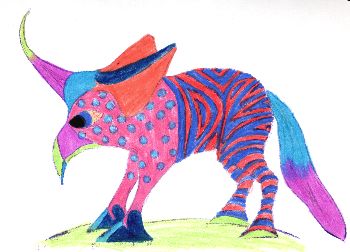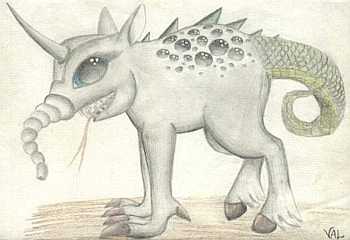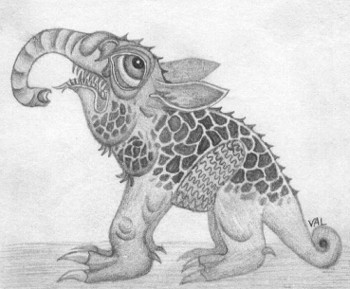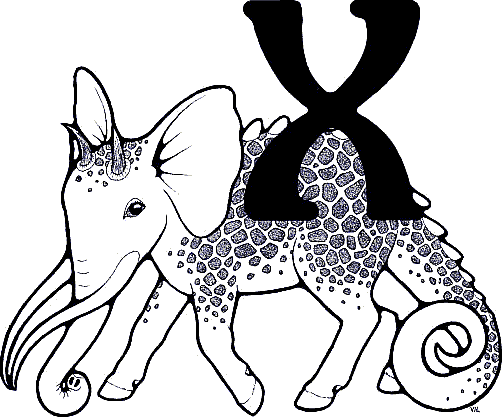
1970: drawing for a coloring book (somebody else colored this one - yikes!)

about 1973: I had discovered how to draw "glass drops"

about 1975: playing around with expressive eyes
 1970: drawing for a coloring book (somebody else colored this one - yikes!)  about 1973: I had discovered how to draw "glass drops"  about 1975: playing around with expressive eyes |
While pondering the pros and cons of imagination vs. rational observation, I of course think back to what I did, and what I liked or did not like when I was a kid. At least I try. The passage of over 50 years gives me serious pause about my ability to accurately recall anything from that period. I do, however, have a few solid pieces of evidence that reflect my behaviors from the ancient past. Photos, some written essays, report cards, and a few other mementos have been preserved, mostly due to the exceptional organizational skills of my mother. I also have a fair amount of my artwork, especially that produced after about age 11 when my whole "portfolio" (a large envelope containing most of my drawings) was demolished by my dog. At this point I can only hope that she enjoyed the experience as much as I lamented it. I can still remember the sinking feeling of finding shreds of paper all over the floor.
Anyway, from that time on, I was a bit more careful when it came to storing my artwork and I now have quite a compilation. Besides drawing familiar animals and plants, or copying images I found in books, I sometimes just made up creatures. They could be mythical, such as unicorns and dragons, or chimeric, or almost abstract. I doodled on my notebook covers in school, letting one form morph into another until I'd filled all the space available. Drawing was something of a time-waster, but it also could be a bit useful. I contributed images for the school bulletin board, illustrated my homework, or created posters and cards. Sometime around age 8 or 9, I started drawing a composite creature that had a large head, such as an elephant or giant parrot, a horse-type body and a long tail. The details varied with each iteration; sometimes the head had a beak, a trunk, large ears or a single horn on the head. Sometimes the body had spots, stripes, scales or even wings. I liked to add some sort of decoration down the spine, such as the osteoderms or scutes on reptiles. The legs might end in horse hooves or bird claws or something similar to suction cups. The tail ranged from that of a horse to a snake to a possum to a dinosaur. It was easy to see that some influences were real animals while some were imaginary monsters. I never gave the creature a name, but I was aware that I was just fooling around with the design on a single type of beast. It was fun - kind of like daydreaming realized.
I returned to this theme a couple of times during the ensuing years, but in my twenties, more of my artwork was purposeful (I needed to earn money), especially the production of posters for concerts and events, so I focused my efforts on practical images and reduced the amount of recreational drawing I did. But once I left school for full-time teaching and performing, the urge to draw for sheer pleasure returned.
 The Xenozoan |
It's funny how a figment of my imagination seems as familiar as any real species of animal. I've known it for decades, and the Xenozoan sort of evolved as I aged, its various composite bits changing as I experimented with the different visual effects. I tended to strive for a biologically convincing look, as if such a creature could in fact live in an alternate reality. I find actual animals, in all their diversity and glory, to be incredibly engaging, but I also enjoy a romp in the creative universe of the imagination as well. It would be impossible to relinquish either, and I am glad that, as a child, I was privy to both the factual and the fantastic.